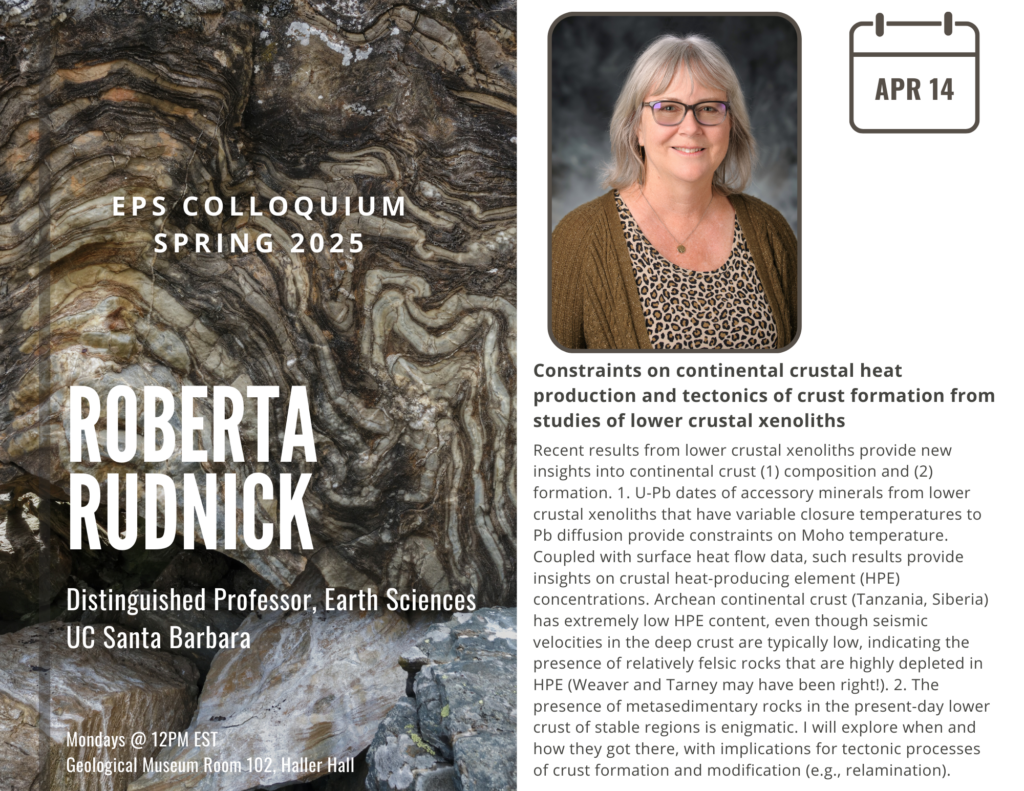EPS Colloquium – Roberta Rudnick, University of California Santa Barbara
Constraints on continental crustal heat production and tectonics of crust formation from studies of lower crustal xenoliths
Recent results from lower crustal xenoliths provide new insights into continental crust (1) composition and (2) formation. 1. U-Pb dates of accessory minerals from lower crustal xenoliths that have variable closure temperatures to Pb diffusion provide constraints on Moho temperature. Coupled with surface heat flow data, such results provide insights on crustal heat-producing element (HPE) concentrations. Archean continental crust (Tanzania, Siberia) has extremely low HPE content, even though seismic velocities in the deep crust are typically low, indicating the presence of relatively felsic rocks that are highly depleted in HPE (Weaver and Tarney may have been right!). 2. The presence of metasedimentary rocks in the present-day lower crust of stable regions is enigmatic. I will explore when and how they got there, with implications for tectonic processes of crust formation and modification (e.g., relamination).
To be added to the EPS colloquium mailing list, please contact Caroline Carr at carolinecarr@fas.harvard.edu.

Roberta L. Rudnick is a Distinguished Professor in the Department of Earth Science at the University of California, Santa Barbara. Prior to joining the UCSB faculty in 2016 she held Professorial appointments at the University of Maryland and at Harvard University. Dr. Rudnick, a first-generation college student, obtained her B.S. in Geology at Portland State University, an M.S. from Sul Ross State University in Alpine, Texas and her Ph.D. in Geochemistry from the Research School of Earth Sciences at the Australian National University in 1988. Her research focuses on the origin and evolution of the continents, including the underlying mantle lithosphere, as well as application of non-traditional stable isotope geochemistry to Earth evolution. She is a member of the American Academy of Arts and Sciences, the U.S. National Academy of Sciences and a foreign member of the Chinese Academy of Sciences.

